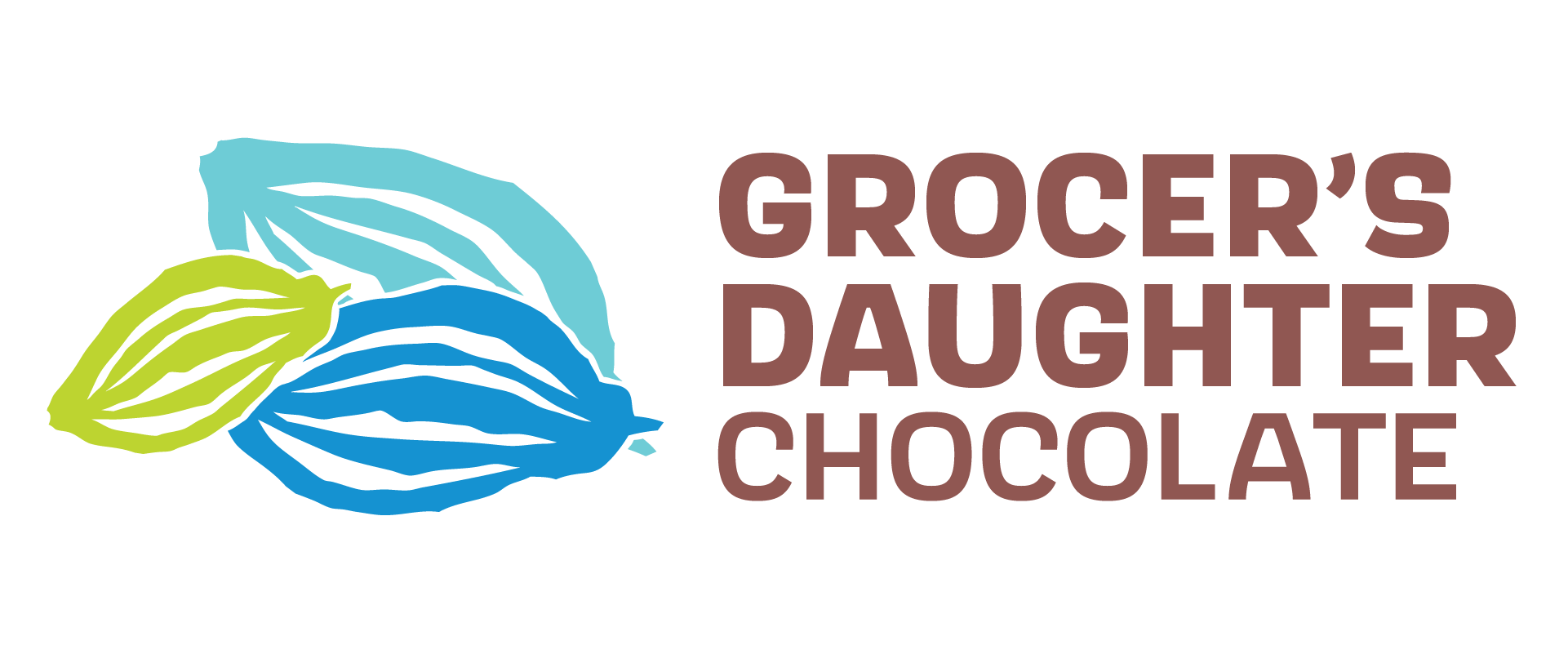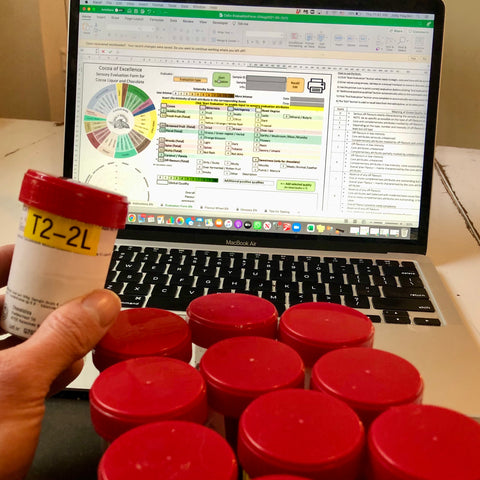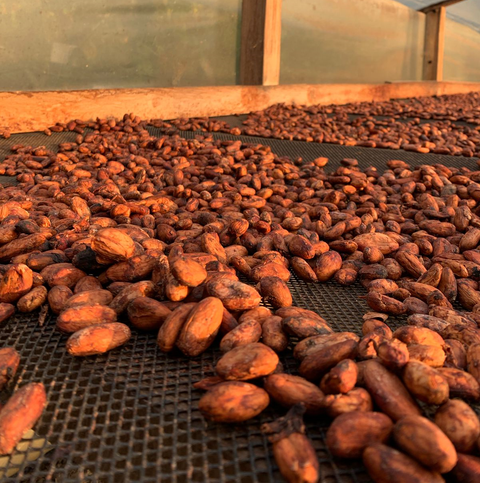
Walk into any deli or bakery and you’re sure to find what can easily be considered a sweet tooth’s best friend: chocolate chip cookies. But much like with the clothes you put on this morning, you are perhaps impervious to the story that the chocolate chips are telling you through the glass counter. Lucky for you, here at GDC we speak chocolate, and we want to share with you the story that those delicious chocolate morsels are melting for you to know.
The Transparent Chocolate Chip
One method to ensure cacao producing countries retain more of the wealth and knowledge of the industry is to support businesses and brands manufactured (ie - value added) in the producing country. It entails a long overdue break-up with the commodity cacao market. Value-adding, as its name implies, means that the cacao is transformed into something of higher value in the producing country, rather than being shipped off to Europe or North American to be processed into chocolate. This notion of value-adding at origin seeks to redistribute the wealth along the value chain in a more equitable manner. Instead of speculation and chasing short-term profits as is customary in commodity trading, value adding aims to create a long-term sustainable model that increases the bottom line for everyone in the value chain. At GDC we are 100% committed to working closely with our partners like Conexion Chocolate, who manufactures their chocolate in Ecuador, to ensure more of the value and knowledge of our chocolate remains in the producing country.The benefits of value add in are not only economic. Here’s how value-adding in the producing country is improving the quality of life and ensuring that you get the great tasting chocolate you know and love.

#1: Know How
Have you ever tried to ferment grapes to make wine? Or have you ever tried to cure fish or skin a deer? These tasks are not easy without the know-how. The same comes with farming cacao. When manufacturing is done in the country of origin, it’s much more likely farmers will get the chance to taste chocolate made from their fruits and understand how they can improve quality. Many times farmers never have the opportunity to taste chocolate made from their cacao. How can they improve their farming or post-harvest techniques without feedback? Rural cacao farmers often lack knowledge about what benefits the cacao plant in a way that improves the quality, soil health and yield. Techniques such as pruning, fertilizing, adding micro and macro nutrients, are all key elements to having a successful crop. Producing countries can’t count on the guidance and support of their government and so largely depend on their buyers, industry allies and large development organizations to provide technical support and quality feedback.
When companies such as ours take the time to know who we are buying from, it means that the organization selling us the cocoa beans knows that we are interested in their success. Through a process known as traceability, chocolate makers and chocolate shops can follow the cocoa bean back to the original cooperative or even farmer. The focus becomes more on the relationship and how to promote healthy farms and fruit. We select and support in-country partners who are committed to providing technical assistance to cooperatives and associations, so that the farmers gain the know-how to improve their production.
As GDC grows, we’ll continue to develop partnerships with in-country chocolate makers that prioritize traceability, transparency and the success of producer partners including gender equity, promotion of sustainable farming practices, etc.

#2: The Flavor Revolution
It is widely documented among scholars that our Meso-American ancestors revered cacao. They often created very sophisticated preparations of cacao recipes, even using the beans as a form of currency. After Cortez invaded Mexico, the Europeans took control of the cacao trade, planting vast plantations of cacao in West Africa. These were tended by slaves and indentured servants. They also industrialized the processing with the notable additions of sweetener and milk. Sugar-laden chocolate became one of the world’s favorite treats, with very little attention or concern for the cacao or the farmers who grow it. In the United States, the milky, sugary version of chocolate is all we’ve known since childhood.
In the past twenty years chocolate has experienced a renaissance where professionals and consumers alike seek out and celebrate the varied expressions of cacao in chocolate. Similar to the specialty coffee industry, consumers are beginning to have sophisticated preferences about where their chocolate is from, how it is fermented, etc. There are many companies leading the charge to revolutionize the way cacao and chocolate are traded and appreciated so that everyone along the value chain benefits. At GDC, we’re committed to developing relationships with suppliers like Conexion Chocolate and allies like the Cacao and Chocolate Summit, Fine Chocolate Industry Association, and the Heirloom Cacao Preservation Fund to preserve unique varieties and flavors of cacao and to uplift the entire industry

#3: Economics
In the commodities world, cacao prices are highly volatile, competing on a global scale and favoring the lowest prices. That means that producing at a cheaper cost puts you ahead of the competition. For cacao farmers that has meant significant losses, reduced and unpredictable wages, and/or child labor. Value adding in-country is one way to help level the playing field because it allows cacao farmers the option to make chocolate from their own cacao and sell to chocolate consumers/tourists within their same country, often at a better price than what can be fetched on the global market.
Conexion Chocolate Example, Commodity vs Fine Chocolate
|
Unit |
Conversion |
|
1 ton of cacao |
100 quintales |
For each quintal of cacao a farmer brings in, he or she can earn about $104 from the market.
Conexion Chocolate, alternatively, pays $150-200 per quintal depending on quality and certification. This is nearly double the pay for the same amount of cacao. Improving the bottom line this way is only possible when chocolate producers are viewed as partners rather than cogs in the chocolate machine. Cocoa commodity trading plus driven by demand for cheap chocolate leaves little economic benefit for the average cacao farmer. By developing long-term relationship with producer associations, paying higher prices and growing the market for quality cacao, it's a win-win-win for both Conexion, cacao farmers and chocolate lovers.

#4: Preservation
While money is important, there will be no cacao if we don’t take care of the habitats in which it grows. Deforestation and desertification of cacao growing regions is increasing at alarming rates, especially since cacao thrives in many of the most biodiverse regions of the world. In partnership with Conexion Chocolate and the Heirloom Cacao Preservation fund, we are supporting efforts to fortify Ecuador’s prized and delicate variety called Nacional, a fruity, floral cacao that is in danger of going extinct because it is being replaced by the heartier, less flavorful hybrid CCN51. Just 2 years ago, 55% of the cacao produced in Ecuador was the Nacional variety, this year it is 45%. As global demand for cheap chocolate grows, this flavorful old indigneous species is supplanted. Our partner Conexion Chocolate works with farmers who grow Nacional and is in the fight to conserve Ecuador’s cacao heritage.

#5: Relationships
The creation of high quality chocolate is a mix of art, science and, most importantly, healthy relationships. While a chocolate maker can have every ingredient and process dialed in, without great partnerships along the value chain it is impossible to produce incredible quality chocolate year after year, nor to create the synergy necessary to elevate the industry for everyone. By partnering with chocolate makers at origin like Conexion Chocolate, sharing information and communicating honestly we are all able to create a more just (and delicious) chocolate industry
Grocer’s Daughter Chocolate is a value driven business and we are committed to being a force for good. Are we perfect? No. Are we learning? Yes, and we always will be. If we know one thing, being a student and steward of fine cacao and chocolate is a never-ending pursuit and we will do everything in our power to transform the chocolate industry to be a more humane and sensible one. The next time you have the urge for a chocolate chip cookie, ask yourself, what story is your chocolate telling you?
Also, if we've made you hungry for a chocolate chip cookie, here's our shop recipe (or come visit us soon!).





